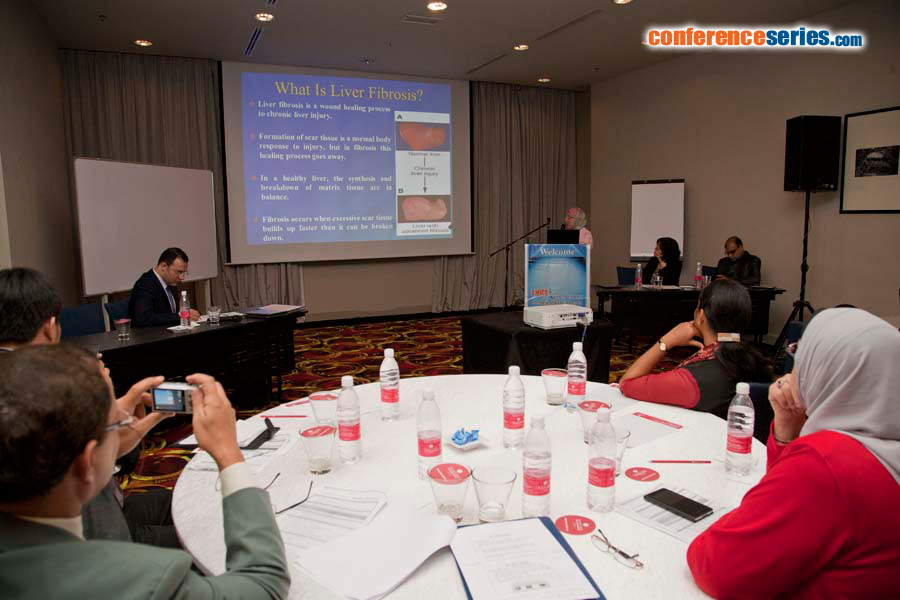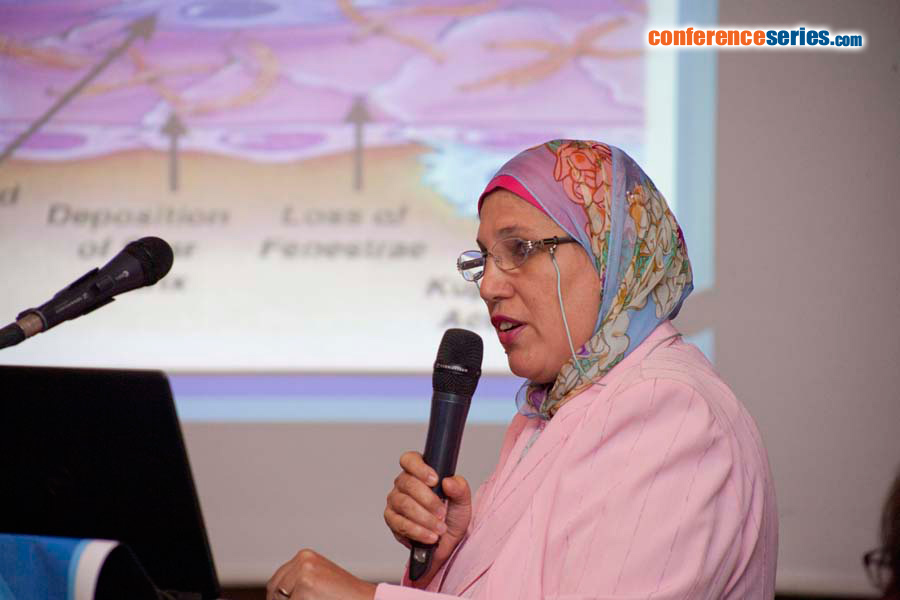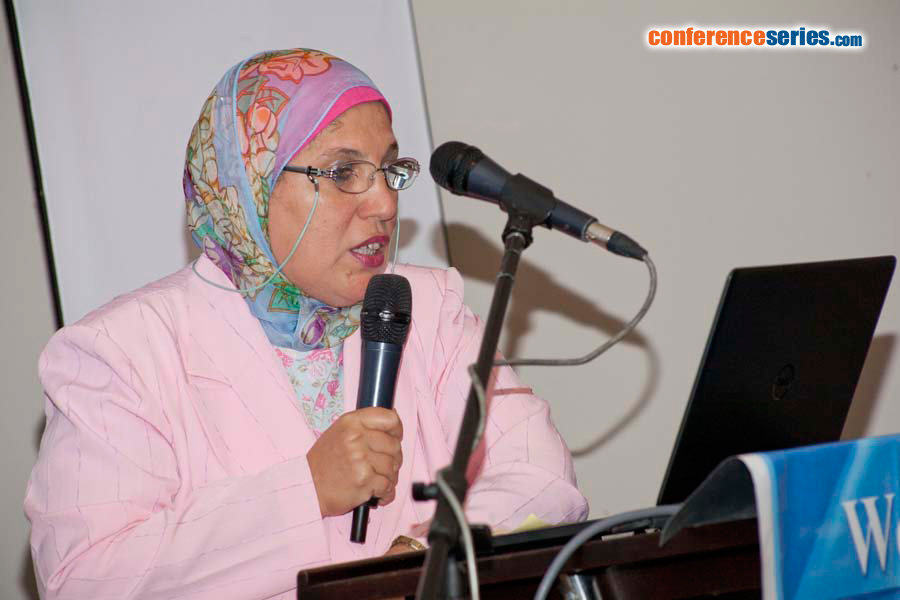
Naglaa M El-Lakkany
Theodor Bilharz Research Institute, Egypt
Title: Antifibrotic effects of gallic acid on activation/proliferation of cultured hepatic stellate cells and in thioacetamide-induced liver fibrogenesis in rats
Biography
Biography: Naglaa M El-Lakkany
Abstract
Hepatic stellate cells (HSCs), activated during liver injury, constitute a prime target for antifibrotic therapy. The presence of phenolic compounds in fruit- and vegetable-rich diets has attracted researchers' attention due to their health-promoting effects. This study investigates the antifibrotic effect of gallic acid (GA) of Punica granatum L. on experimental liver fibrosis in vitro and in vivo and its possible mechanism. The anti-proliferative activity of GA on cultured HT-6 HSCs was determined by cell viability using sulforhodamine base (SRB) cytotoxicity assay. Preliminary data showed that cell viability of HSCs was significantly decreased when treated with 5, 12.5, 25, 50, 100, 150, 200, 400 and 500 µg/ml of GA for 24 and 48 hours, in a concentration and time-dependent manner, with IC50 equals 42 and 18 µg/ml respectively. Oral administration of GA in a dose of 50 mg/kg daily for 8 weeks successfully alleviated the thioacetamide (TAA)-induced rat liver damage, decreased collagen accumulation, serum ALT and AST activities, liver tissue TIMP-1, TGF-β1 and PDGF-BB levels, and liver fibrosis grade (from S4 to S2 with mild, thin fibrous bands). Additionally, immunohistochemistry of liver fibrosis related markers such as α-SMA and PCNA were reduced, and the activity of GSH as well as the MDA content was reversed in treated rats. These results suggested that GA decreased HSCs viability and could act against TAA-induced liver injury and fibrosis in rats by a mechanism related to its antioxidant properties, anti-inflammatory effect and its ability to attenuate HSCs activation and proliferation.
Speaker Presentations
Speaker PPTs Click Here



